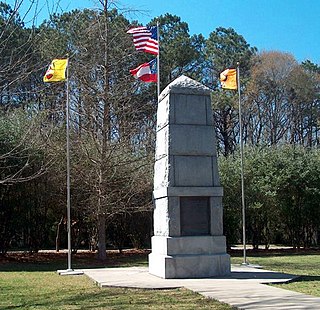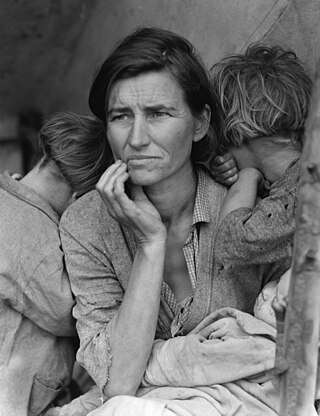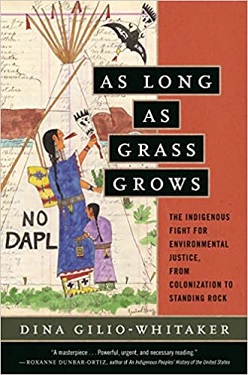
The Trail of Tears was an ethnic cleansing and forced displacement of approximately 60,000 people of the "Five Civilized Tribes" between 1830 and 1850 by the United States government. As part of the Indian removal, members of the Cherokee, Muscogee (Creek), Seminole, Chickasaw, and Choctaw nations were forcibly removed from their ancestral homelands in the Southeastern United States to newly designated Indian Territory west of the Mississippi River after the passage of the Indian Removal Act in 1830. The Cherokee removal in 1838 was brought on by the discovery of gold near Dahlonega, Georgia, in 1828, resulting in the Georgia Gold Rush.

The Indian Removal Act of 1830 was signed into law on May 28, 1830, by United States President Andrew Jackson. The law, as described by Congress, provided "for an exchange of lands with the Native Americans residing in any of the states or territories, and for their removal west of the river Mississippi." During the presidency of Jackson (1829–1837) and his successor Martin Van Buren (1837–1841) more than 60,000 Native Americans from at least 18 tribes were forced to move west of the Mississippi River where they were allocated new lands as part of an ethnic cleansing or genocide. The southern tribes were resettled mostly in Indian Territory (Oklahoma). The northern tribes were resettled initially in Kansas. With a few exceptions, the United States east of the Mississippi and south of the Great Lakes was emptied of its Native American population. The movement westward of indigenous tribes was characterized by a large number of deaths occasioned by the hardships of the journey.

Leslie Marmon Silko is an American writer. A woman of Laguna Pueblo descent, she is one of the key figures in the First Wave of what literary critic Kenneth Lincoln has called the Native American Renaissance.

The American Indian Movement (AIM) is an American Indian grassroots movement which was founded in Minneapolis, Minnesota in July 1968, initially centered in urban areas in order to address systemic issues of poverty, discrimination, and police brutality against American Indians. AIM soon widened its focus from urban issues to many Indigenous Tribal issues that American Indian groups have faced due to settler colonialism in the Americas. These issues have included treaty rights, high rates of unemployment, the lack of American Indian subjects in education, and the preservation of Indigenous cultures.

An Okie is a person identified with the state of Oklahoma, or their descendants. This connection may be residential, historical or cultural. For most Okies, several of these connections exist and are collectively the source of their being Oklahoman. While not an official demographic used or recognized by the United States Census Bureau, Okies, due to various factors, have developed their own distinct culture within larger social groupings both akin to and separate from Midwestern and Southern influences. Included are their own dialect, music, and Indigenous-derived folklore.

Paula Gunn Allen was an American poet, literary critic, activist, professor, and novelist. Of mixed-race European-American, Arab-American, and Native American descent, she identified with her mother's people, the Laguna Pueblo. Gunn Allen wrote numerous essays, stories and poetry with Native American and feminist themes, and two biographies of Native American women. She edited four collections of Native American traditional stories and contemporary writing.

Linda K. Hogan is an American poet, storyteller, academic, playwright, novelist, environmentalist and writer of short stories. She is currently the Chickasaw Nation's writer in residence. Hogan is a recipient of the Lannan Literary Award for Poetry.

Joy Harjo is an American poet, musician, playwright, and author. She served as the 23rd United States Poet Laureate, the first Native American to hold that honor. She was also only the second Poet Laureate Consultant in Poetry to have served three terms. Harjo is a member of the Muscogee Nation and belongs to Oce Vpofv. She is an important figure in the second wave of the literary Native American Renaissance of the late 20th century. She studied at the Institute of American Indian Arts, completed her undergraduate degree at University of New Mexico in 1976, and earned an MFA degree at the University of Iowa in its creative writing program.

This is a bibliography of selected works about Nicaragua.
Allison Adelle Hedge Coke is an American poet and editor. Her debut book, Dog Road Woman, won the American Book Award and was the first finalist of the Paterson Poetry Prize and Diane DeCora Award. Since then, she has written five more books and edited eight anthologies. She is known for addressing issues of culture, prejudice, rights, the environment, peace, violence, abuse, and labor in her poetry and other creative works.

During and after the European colonization of the Americas, European settlers practiced widespread enslavement of Indigenous peoples. In the 15th Century, the Spanish introduced chattel slavery through warfare and the cooption of existing systems. A number of other European powers followed suit, and from the 15th through the 19th centuries, between two and five million Indigenous people were enslaved, which had a devastating impact on many Indigenous societies, contributing to the overwhelming population decline of Indigenous peoples in the Americas.

The Great Sioux Nation: Sitting in Judgment on America is a book edited by Roxanne Dunbar-Ortiz, "An Oral History of the Sioux Nation and Its Struggle for Sovereignty", that documents the 1974 "Lincoln Treaty Hearing". Testimony produced during that hearing has been cited by the International Indian Treaty Council in advocating for Indigenous sovereignty and treaty rights, efforts which eventually saw the 2007 Declaration on the Rights of Indigenous Peoples.

Paul Chaat Smith (Comanche) is an author and an associate curator at the National Museum of the American Indian. He writes and lectures frequently on American Indian art and politics.
Native American feminism or Native feminism is, at its root, understanding how gender plays an important role in indigenous communities both historically and in modern-day. As well, Native American feminism deconstructs the racial and broader stereotypes of indigenous peoples, gender, sexuality, while also focusing on decolonization and breaking down the patriarchy and pro-capitalist ideology. As a branch of the broader Indigenous feminism, it similarly prioritizes decolonization, indigenous sovereignty, and the empowerment of indigenous women and girls in the context of Native American and First Nations cultural values and priorities, rather than white, mainstream ones. A central and urgent issue for Native feminists is the Missing and murdered Indigenous women crisis.
Since the mid-twentieth century, indigenous organizations in Nicaragua have historically formed in response to economic, political, and cultural injustices and to create infrastructure for self-governance. They most often represent their motives and goals as pan-indigenous and do not employ Marxist or Leninist ideas or language of class struggles. Although many organizations stress Miskitu ethnicity, language, and history, most major Nicaraguan indigenous organizations have advocated on behalf of indigenous peoples in general.

An Indigenous Peoples' History of the United States is a non-fiction book written by the historian Roxanne Dunbar-Ortiz and published by Beacon Press. It is the third of a series of six ReVisioning books which reconstruct and reinterpret U.S. history from marginalized peoples' perspectives. On July 23, 2019, the same press published An Indigenous Peoples' History of the United States for Young People, an adaptation by Jean Mendoza and Debbie Reese of Dunbar-Ortiz's original volume.

Loaded: A Disarming History of the Second Amendment is a book written by the historian Roxanne Dunbar-Ortiz and published by City Lights Books. It takes a close and unexpected look at the historical origins of the Second Amendment to the United States Constitution. Despite being no fan of guns, Dunbar approaches the subject from neither the liberal nor the conservative side of the usual debate, instead digging deeply into the subject as a historian to unearth surprising facts.

As Long as Grass Grows: The Indigenous Fight for Environmental Justice, from Colonization to Standing Rock is a 2019 non-fiction book by Dina Gilio-Whitaker. The author details the history of Native Americans in the United States since European colonization, including criticisms of the modern conservation movement as exclusionary to indigenous concepts of land and environmental stewardship, and coverage of the 2010s Dakota Access Pipeline protests at Standing Rock.
Dina Gilio-Whitaker is an American academic, journalist and author, who studies Native Americans in the United States, decolonization and environmental justice. She is a member of the Colville Confederated Tribes. In 2019, she published As Long as Grass Grows.















